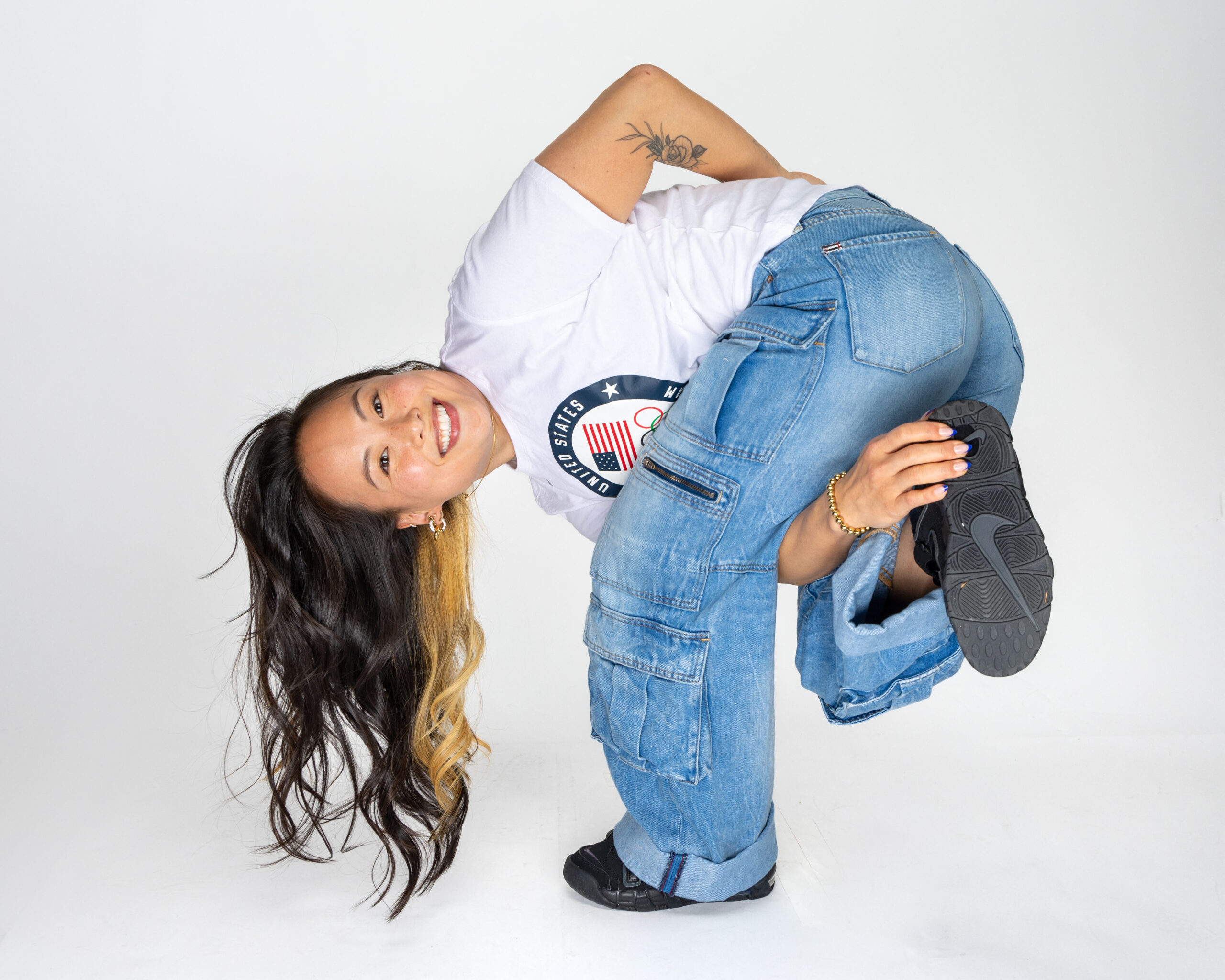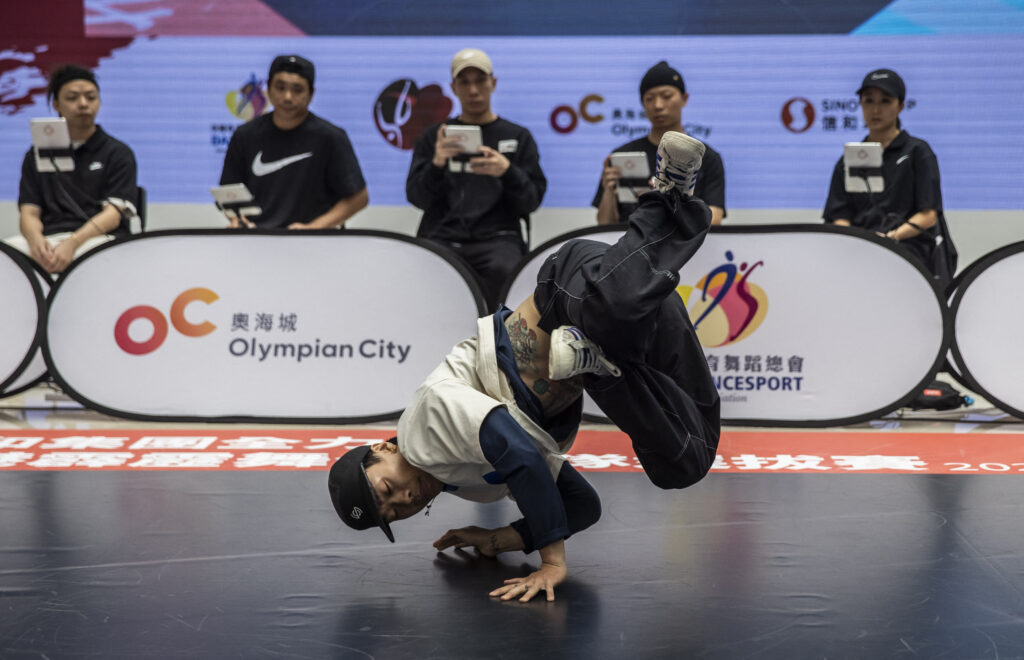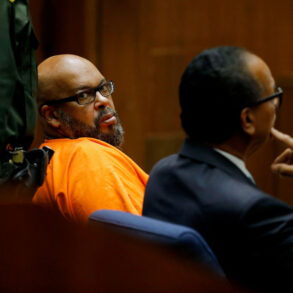In a world where formal education often dominates the narrative of success, it’s easy to assume that a degree is the key to mastering any craft.
However, when it comes to dance, especially breakdancing, this couldn’t be further from the truth.
Unlike traditional dance forms, breakdancing thrives on individuality, creativity, and the passion for pushing boundaries — all of which can be cultivated without a formal education.
Some of the most renowned breakdancers began their journeys not in studios but on the street, learning and perfecting their moves through sheer determination and a love for the art.

Breakdancing often requires momentum, speed, endurance, strength, flexibility, and control to execute the performance. Source: AFP
Tracing its roots back to the Bronx
1970. Bronx, New York City.
When gang conflicts became widespread, another way to resolve fights emerged, one that emphasised skill, discipline, and mutual respect.
Breakdancing, also known as breaking or b-boying/b-girling, and its dance battles often served as a non-violent way to settle disputes between rival gangs or individuals, transforming potential clashes into showcases of creativity and athleticism.
This street dance style is deeply rooted in the birth of hip-hop culture, which was born within marginalised African American and Puerto Rican communities. Later, it would transform once more, influenced this time by martial arts, funk music, and gymnastics.
Now, all the world has its eyes on this particular dance genre.
Movies like “Wild Style,” “Step Up”, and “Breakin,” have hit global cinemas. Even universities like Queensland University of Technology and the University of Bolton offering dance degrees with courses in breakdancing, highlighting its academic significance.
The dance’s journey from the streets to the world stage reached a new level of success with its inclusion as an official sport in the Paris 2024 Olympics — an achievement for a dance form that began as a creative outlet in the marginalised neighbourhoods of New York City.
[embedded content]
Hello Olympics, goodbye Olympics
Breakdancing made its Olympic debut on August 9, 2024, starting with the B-girls event and followed by the B-boys competition on Saturday.
In the B-girls category, Japan won the gold, Lithuania earned silver, and the US took home bronze. In the B-boys event, Canada succeeded with gold, France secured silver, and China claimed bronze.
While the debut generated excitement, the competition also drew criticism, particularly surrounding the performance of Australian competitor Rachael “Raygun” Gunn.
Gunn’s routine, which included mimicking a kangaroo, was met with backlash and ultimately received a score of zero.
Despite the controversy, Gunn — who holds a PhD in Cultural Studies and a BA (Hons) in Contemporary Music — will return to her role as a lecturer at Macquarie University.
In the wake of the uproar over Gunn’s performance, it was announced that breakdancing will not be included in the 2028 Los Angeles Olympics.
This decision, made before the Paris 2024 Olympics, will see breakdancing replaced by sports like cricket, baseball, softball, lacrosse, flag football, and squash, as reported by NBC News.

Sunny Choi represented Team USA in the 2024 Paris Olympics. However, she came in 10th with 2010 points. Source: AFP
Breakdancers who made a name for themselves without a degree in dance
Gunn is not the only breakdancer with a degree unrelated to dance.
Ami Yuasa, the first-ever Olympic gold medalist for breaking, took the unconventional route to victory.
Born in Kawaguchi, Saitama Prefecture, Japan, she graduated from a local high school before attending Komazawa University in Tokyo, where she studied English and American Literature.
In 2018, she made history as the first female winner of the Red Bull BC One World Championship. Since then, Yuasa has consistently excelled in global dance competitions, often finishing in first or second place.
Similarly, Team USA member Sunny Choi didn’t start as a breakdancer but as a gymnast.
While studying business at the University of Pennsylvania’s Wharton School, Choi was part of the gymnastics team until a knee injury forced her to withdraw. One evening, she noticed students practising breakdancing on campus and decided to join their club. This decision sparked a new passion, leading her to win silver at the 2019 World Urban Games, silver at the 2022 World Games in Dancesport, and gold at the 2023 Pan American Games.
Another Team USA member, Vicki Chang, pursued an academic path far from dance.
She studied ecology and restoration sociology at the University of California, Berkeley, where she discovered breakdancing at 18 and initially kept it as a hobby. In 2021, Chang left her job as an ecological consultant to become a full-time b-girl, dedicating herself to her artistic passion and aiming for the Paris 2024 Olympics.
These examples illustrate that a degree in dance isn’t always necessary to pursue a successful dance career.
One reason is the relatively short span of a dancer’s career, which often ends around the age of 35, according to the BBC. For ballet dancers, careers typically conclude between the ages of 30 and 40.
Having a degree in a different field provides a valuable fallback option for when dancers eventually retire. While a dance degree isn’t essential, related fields like communications, music, or art can offer complementary skills and opportunities for those passionate about dance.
[embedded content]
6 universities, you can receive a degree in dancing or a minor in breakdancing
If you’re still determined to pursue a degree in dance, here are some universities you can check out to reach your dream of becoming the next world-class dancer.
University of Bolton, UK
Degree: BA (Hons) Street Dance Artistry and Hip-Hop Theatre (top-up)
The programme at the University of Bolton allows you to learn an eclectic mix of dance styles and techniques, including breakdancing, popping, locking, house, waacking, voguing, and hip-hop. This curriculum is designed to nurture versatility and innovation in dance, allowing students to develop their skills and artistic expression.
Alumni of the programme have gone on to perform with some of the biggest names in the dance and performing arts industry, including Dua Lipa, Kendrick Lamar, Demi Lovato, Zayn Malik, Black Eyed Peas, Fifth Harmony, Little Mix, and Stormzy.
University of Rochester, US
Degree: Minor in Dance and Movement Studies
The programme at the University of Rochester is designed for those who wish to deepen their understanding of dance as both an art form and a cultural practice. Students develop dance literacy and appreciation through courses emphasising observation, analysis, and critical response.
For those seeking a more technical focus, the minor in Movement Studies offers an experiential and theoretical approach to movement and dance. This is where you can learn breakdancing while gaining a broader understanding of global cultures, traditions, and philosophies through the study of movement. The programme is ideal for students combining physical practice with cultural insight.
College of the Holy Cross, US
Degree: Minor in Dance
To complete the minor in dance at the College of the Holy Cross, you must select an introductory course in basic dance, modern dance, ballet, or hip-hop/breakdancing. The programme also includes an advanced dance performance workshop and a course in choreography composition.
In addition to these core requirements, you must complete three elective courses. Options include acting, stage combat, Balinese dance, body stories, and more, allowing you to tailor your studies to your interests and goals.
Temple University, US
Degree: BFA in Dance and Minor in Dance
In Temple University’s programme, you’ll receive intensive training in various dance genres, including ballet, modern and postmodern, and African diasporic forms. Additionally, you’ll form a solid foundation in choreography, dance history, theory, and performance.
Graduates of the programme have pursued diverse careers as artistic directors, choreographers, dance educators, therapists, entrepreneurs, administrators, and writers. Many also continue their studies at the master’s or doctoral level, preparing for careers in research and advocacy.
Korea National University of Arts, South Korea
Degree: Bachelor’s in Choreography
The Korea National University of Arts‘ curriculum does not emphasise breakdancing. Instead, students can immerse themselves in modern dance, Korean traditional dance, ballet, and contemporary dance. The programme also includes courses in culture, human anatomy, society, and music, all integral to a well-rounded dance education.
If you’re still interested in pursuing breakdancing, the university is conveniently located near several renowned studios, including 1 Million Dance Studio, Urban Play Dance Academy, Def Dance School, and the Korea B-boy Association Dance Studio.
Queensland University of Technology, Australia
Degree: BFA in Dance
The dance major at Queensland University of Technology offers comprehensive training across various genres, including jazz, hip-hop, breakdance, capoeira, ballet, contemporary, swing, and extensive choreographic practice.
You’ll have the opportunity to collaborate with peers and faculty from different disciplines, engage in real-world projects with actual clients, and receive career planning support to guide you through your creative journeys.
This post was originally published on this site be sure to check out more of their content.







